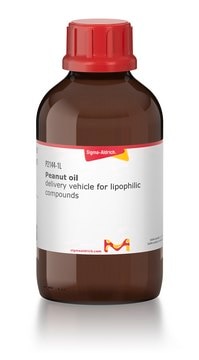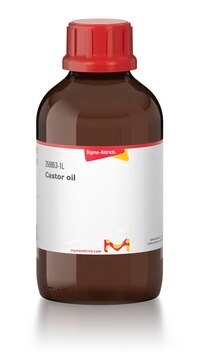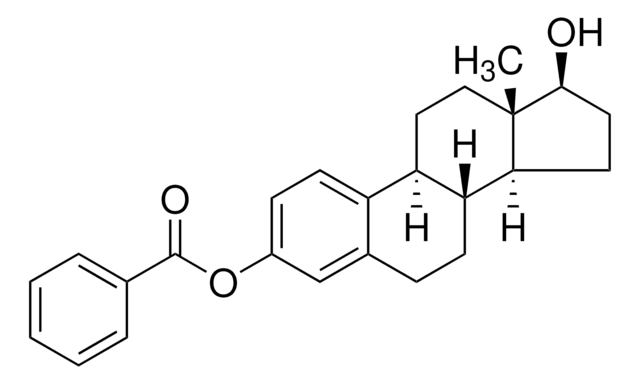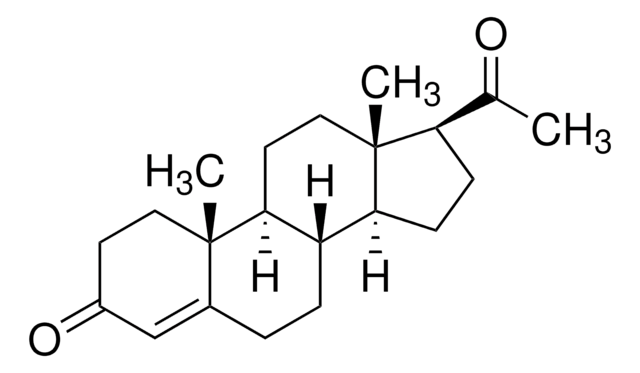S3547
Sesame oil
Antioxidant, delivery vehicle for fat-soluble compounds
Sign Into View Organizational & Contract Pricing
All Photos(1)
About This Item
Recommended Products
biological source
Sesamum indicum (sesame)
Quality Level
form
liquid
density
0.92 g/mL at 25 °C
functional group
oleic acid
lipid type
oils
shipped in
ambient
storage temp.
room temp
Looking for similar products? Visit Product Comparison Guide
General description
Sesame oil may be used in the production of biodiesel and may serve as a viable alternative for the diesel fuel. It acts as an antioxidant having neuroprotective activity on brain hippocampus of rat in focal cerebral ischemia, when given as a dietary supplement. Consumption of sesame oil has a beneficial effect on blood glucose, glycosylated hemoglobin, lipid peroxidation, and antioxidant levels in diabetic rats.
Application
Sesame oil is suitable:
- for dissolving free testosterone
- for the preparation of tamoxifen i.p. injection
- for dissolving aromatizable androgen testosterone and non-aromatizable androgen 5α-dihydrotestosterone
- as a delivery vehicle for the injection of estradiol benzoate
- for dissolving progesterone and estradiol-17β
- for dissolving semisynthetic form of acetyl-11-keto-β-boswellic acid
Used in research applications as delivery vehicle for fat-soluble compounds including steroidal hormones and toxins. Sesame oil has antioxidant properties and was shown to protect against lipopolysaccharide (LPS)-stimulated oxidative stress in animal models.
Storage Class
10 - Combustible liquids
wgk_germany
awg
flash_point_f
491.0 °F
flash_point_c
255 °C
ppe
Eyeshields, Gloves
Certificates of Analysis (COA)
Search for Certificates of Analysis (COA) by entering the products Lot/Batch Number. Lot and Batch Numbers can be found on a product’s label following the words ‘Lot’ or ‘Batch’.
Already Own This Product?
Find documentation for the products that you have recently purchased in the Document Library.
Customers Also Viewed
Abdurrahman Saydut et al.
Bioresource technology, 99(14), 6656-6660 (2008-01-08)
The sesame (Sesamum indicum L.) oil was extracted from the seeds of the sesame that grows in Diyarbakir, SE Anatolia of Turkey. Sesame seed oil was obtained in 58wt/wt%, by traditional solvent extraction. The methylester of sesame (Sesamum indicum L.)
Saif Ahmad et al.
Life sciences, 79(20), 1921-1928 (2006-07-11)
Oxidative stress may be regarded as an imbalance between free radical production and opposing antioxidant defenses. Free radical oxidative stress is implicated in rat cerebral ischemia and naturaceutical antioxidants are dietary supplements that have been reported to have neuroprotective activity.
Justin T Hsieh et al.
Neuroendocrinology, 103(5), 518-530 (2015-09-12)
Preclinical evidence suggests that progesterone improves recovery after intracerebral hemorrhage (ICH); however, gonadal hormones have sex-specific effects. Therefore, an experimental model of ICH was used to assess recovery after progesterone administration in male and female rats. ICH was induced in
C Anthoni et al.
American journal of physiology. Gastrointestinal and liver physiology, 290(6), G1131-G1137 (2006-01-21)
Recent clinical trials of the gum resin of Boswellia serrata have shown promising results in patients with ulcerative colitis. The objective of this study was to determine whether a semisynthetic form of acetyl-11-keto-beta-boswellic acid (sAKBA), the most potent anti-inflammatory component
Marek Demissie et al.
American journal of physiology. Endocrinology and metabolism, 295(2), E262-E268 (2008-06-12)
Androgen exposure during intrauterine life in nonhuman primates and in sheep results in a phenocopy of the reproductive and metabolic features of polycystic ovary syndrome (PCOS). Such exposure also results in reproductive features of PCOS in rodents. We investigated whether
Our team of scientists has experience in all areas of research including Life Science, Material Science, Chemical Synthesis, Chromatography, Analytical and many others.
Contact Technical Service








